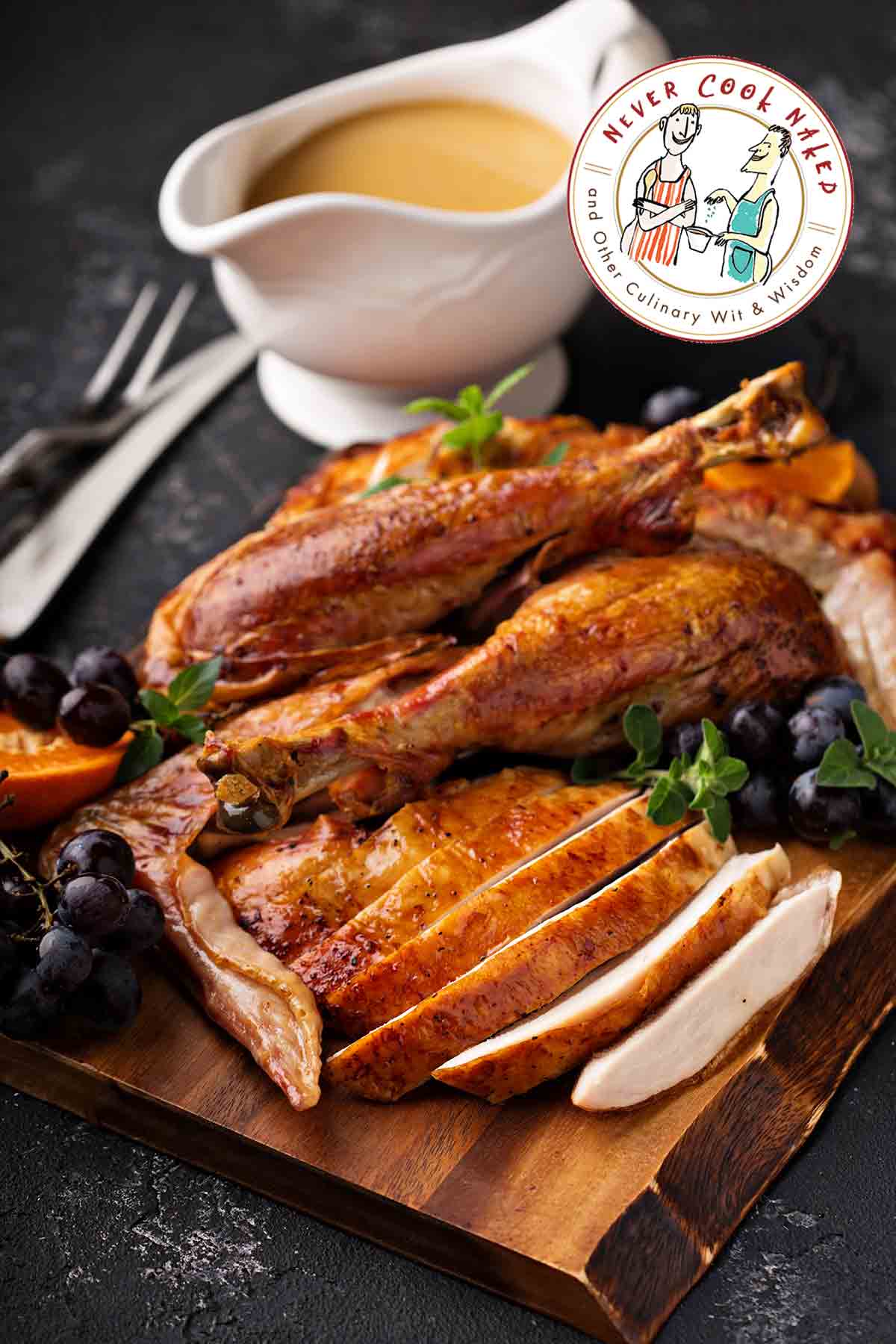
Pink Meat
Jump To
Dear Cold Turkey: Stop doubting yourself on our national pseudo-religious holiday! As long as you use an instant-read meat thermometer to ensure that the turkey does, indeed, measure 160°F (71°C) both in the thickest portion of the thigh and the breast, you stand blameless before the Lord—not to mention your guests. [Editor’s Note: Technically, the hen is done when it’s a few degrees higher, but the temperature will continue to rise after you remove it from the oven and let it rest on the cutting board for 10 or so minutes.]
Instead, blame biology. Specifically, blame a pigment found in the blood and bones of youngish animals, seeing as turkeys are axed quite early. This pigment can seep into muscles—that is to say, meat—and stain it. (You wanted to be a carnivore, right?)
Want to save this?
So get used to it—and to casually explaining to guests that no, the turkey is not undercooked. Same goes for your classic roast chicken, which can suffer the same indignities at the joints.
If your guests doubt you, fear not. Instead, gently remind them that undercooked turkey is squishy and soft with a pallid hue while properly cooked turkey is firm, albeit with the chance of a slightly pinkish tinge at the joints.
Our very clever, very clothed Never Cook Naked columnists are at your disposal, able to troubleshoot everything from questionable table etiquette to tricky cooking techniques (as well as, natch, proper cooking attire). Ask us your question in a comment below!









Thank you! I’ve always thought my turkeys were undercooked for some inexplicable reason.
You’re welcome, Heidi! Here’s to a perfectly cooked one this year. Happy Thanksgiving!